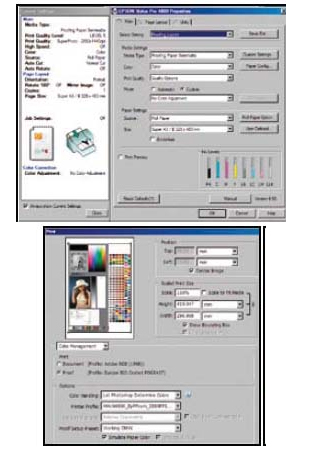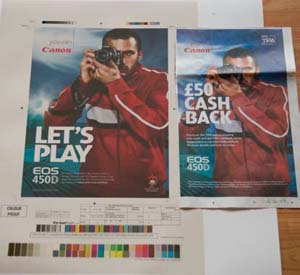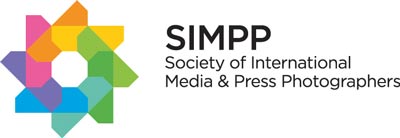articles/Media/proofbeyondreasonabledoubt-page7
Proof Beyond Reasonable Doubt - proofing - part 7 of 1 2 3 4 5 6 7 8 9 10 11
by Mike McNamee Published 01/10/2008

To RIP or Not To RIP?
For general photographic or fine art output, a Raster Image Processor (RIP) may or may not aid the cause. They are expensive (some cost many thousands of pounds) and if you only want to nest sets of images then other solutions such as QImage may be obtained at fractions of the cost. For proofing though, using a RIP expertly can move you on to the next level of precision. In our experience RIPs only increase accuracy when you spend a lot of time setting them up and if your goal is a pleasant rather than accurate image the RIP will not particularly assist.
For the ultimate in precision proofing the GMG System seems to have no rivals despite what other RIP providers would like you to believe. It is also noticeable that the majority of certified RIP solutions tend to be built around the Epson printer range although they are also available for the high-end, wide-format Canon and HP printers.
Pre-Flighting
Pre-Flighting is an essential part of the proofing process, especially from a DTP application. Both InDesign and Acrobat Pro have first-rate pre-flighting and the pre-flight is followed by an offer to package your layout, ready to send to the printer. This assembles a new folder containing all your linked files, the required fonts, the InDesign layout document and a template for a text file in which you can add your name, telephone number and any special instructions for the printer. It really does take the strain out of sending documents away especially if it is something that you rarely do or you are new to business.
Today much of the input to a printing company is delivered in PDF format by disc or ftp transfer. The easiest protocol to use and follow is that provided by the Periodical Publishing Association, called 'Pass4Press' (www.pass4press.com) - simply download the paperwork and follow the recipe.

Mike McNamee revisits the topic after a five year gapWhy Should Photographers Care?
Only photographers who routinely send their work into a process printing environment (eg magazines, books, reports, brochures, catalogues and perhaps newspapers) need to worry in detail about proofing and even then, somebody downstream from them in the workflow is likely to proof a picture for an important job. This does not imply though that the photographer should be ignorant of proofing. At the simplest level the photographer should understand what they are being shown or what is being discussed if somebody telephones with a problem. The whole reason for proofing is the removal of doubt about what is likely to happen when the ink eventually hits the paper.
Perhaps a better concept for the photographer is a calibrated print, that is a print that is known to accurately portray the file from which it came. The word 'accurately' is key to this discussion - it is not good enough to indulge in a bit of hand waving and claim that the print 'looks OK off my printer', when standing before a defence lawyer, when a job has gone woefully wrong (they do, rarely, but it does happen). A contract proof must be demonstrably correct, with the ability to follow an audit trail back to known standards of accuracy. This is what the certification process is all about; FOGRA (for example) tells you how your proofer stacks up against the known standard and issues you with a paper document to confirm that finding.
A special case for proofing by the photographer is for material that is being sent to the local newspaper. Some of the repro is appalling and it is not always the fault of the printer. If you have compiled an advertisement for your photographic services for the local rag, you owe it to yourself to ensure that you are shown in a favourable light. At the very least you should soft proof your proposed artwork on screen to check that the disastrous loss of depth and contrast that inevitably occurs on newsprint does not destroy your message - don't try anything too subtle!
Please Note:
There is more than one page for this Article.
You are currently on page 7
- Proof Beyond Reasonable Doubt - proofing page 1
- Proof Beyond Reasonable Doubt - proofing page 2
- Proof Beyond Reasonable Doubt - proofing page 3
- Proof Beyond Reasonable Doubt - proofing page 4
- Proof Beyond Reasonable Doubt - proofing page 5
- Proof Beyond Reasonable Doubt - proofing page 6
- Proof Beyond Reasonable Doubt - proofing page 7
- Proof Beyond Reasonable Doubt - proofing page 8
- Proof Beyond Reasonable Doubt - proofing - proofing page 9
- Proof Beyond Reasonable Doubt - proofing page 10
- Proof Beyond Reasonable Doubt - proofing page 11
1st Published 01/10/2008
last update 11/11/2019 11:46:30
More Media Articles
There are 20 days to get ready for The Society of Photographers Convention and Trade Show at The Novotel London West, Hammersmith ...
which starts on Wednesday 14th January 2026








